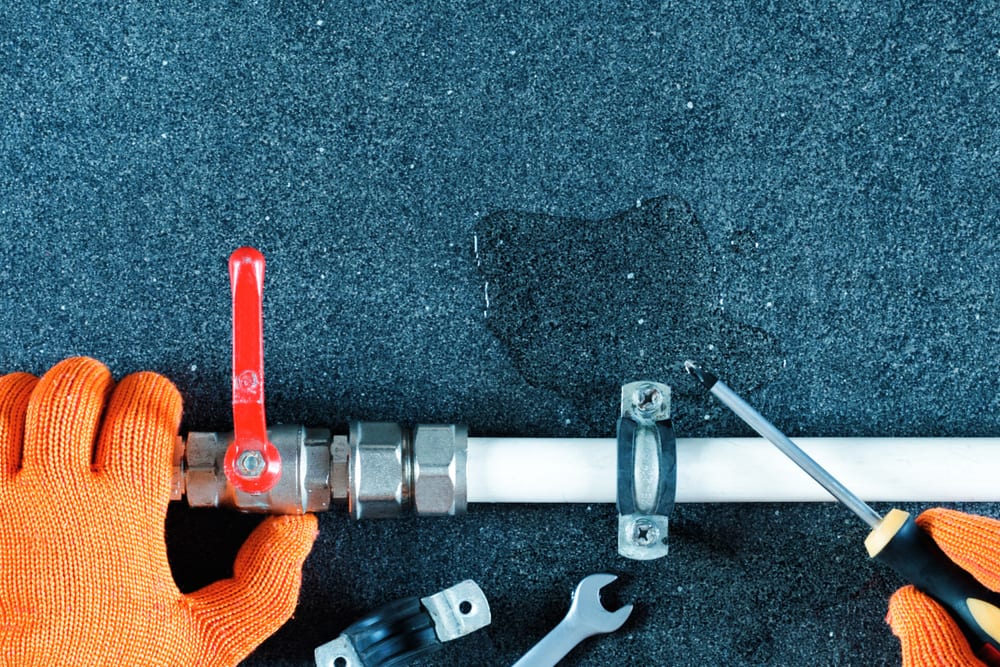Unveil Hidden Water Line Leaks: 6 Effective Finding Techniques
Unveil Hidden Water Line Leaks: 6 Effective Finding Techniques
Blog Article
The article author is making several good points about Finding hidden leaks overall in the article on the next paragraphs.

Early discovery of leaking water lines can reduce a prospective calamity. Some small water leakages might not be visible.
1. Examine the Water Meter
Examining it is a surefire way that aids you uncover leakages. If it moves, that indicates a fast-moving leakage. This means you might have a slow-moving leak that could also be below ground.
2. Inspect Water Usage
Evaluate your water expenses as well as track your water consumption. As the one paying it, you need to observe if there are any disparities. If you detect sudden changes, in spite of your usage being the same, it means that you have leakages in your plumbing system. Keep in mind, your water bill need to drop under the exact same range on a monthly basis. A sudden spike in your costs shows a fast-moving leak.
A stable rise every month, even with the same behaviors, shows you have a slow-moving leak that's additionally slowly rising. Call a plumber to thoroughly examine your property, particularly if you really feel a warm location on your floor with piping beneath.
3. Do a Food Coloring Examination
When it pertains to water intake, 30% comes from bathrooms. Examination to see if they are running properly. Decrease flecks of food color in the storage tank and also wait 10 minutes. If the shade somehow infiltrates your bowl throughout that time without flushing, there's a leak between the container and bowl.
4. Asses Outside Lines
Don't fail to remember to inspect your outside water lines as well. Must water seep out of the connection, you have a loose rubber gasket. One tiny leakage can waste tons of water and spike your water bill.
5. Examine the circumstance as well as examine
Property owners ought to make it a habit to check under the sink counters and also even inside cupboards for any bad odor or mold development. These 2 red flags indicate a leak so punctual interest is called for. Doing regular assessments, even bi-annually, can save you from a significant issue.
If you understand your home is currently old, keep a watchful eye on your heaters, hoses, pipes and so on. Look for discolorations and weakening as most devices as well as pipes have a life expectancy. They will certainly additionally naturally weaken due to damage. If you presume leaking water lines in your plumbing system, don't wait on it to escalate. Call an expert plumber right away so you don't end up with a terrible mess in your house.
Early detection of dripping water lines can mitigate a prospective calamity. Some little water leaks might not be noticeable. Checking it is a surefire way that assists you discover leakages. One tiny leak can waste tons of water as well as spike your water expense.
If you suspect dripping water lines in your plumbing system, do not wait for it to intensify.
WARNING SIGNS OF WATER LEAKAGE BEHIND THE WALL
PERSISTENT MUSTY ODORS
As water slowly drips from a leaky pipe inside the wall, flooring and sheetrock stay damp and develop an odor similar to wet cardboard. It generates a musty smell that can help you find hidden leaks.
MOLD IN UNUSUAL AREAS
Mold usually grows in wet areas like kitchens, baths and laundry rooms. If you spot the stuff on walls or baseboards in other rooms of the house, it’s a good indicator of undetected water leaks.
STAINS THAT GROW
When mold thrives around a leaky pipe, it sometimes takes hold on the inside surface of the affected wall. A growing stain on otherwise clean sheetrock is often your sign of a hidden plumbing problem.
PEELING OR BUBBLING WALLPAPER / PAINT
This clue is easy to miss in rooms that don’t get much use. When you see wallpaper separating along seams or paint bubbling or flaking off the wall, blame sheetrock that stays wet because of an undetected leak.
BUCKLED CEILINGS AND STAINED FLOORS
If ceilings or floors in bathrooms, kitchens or laundry areas develop structural problems, don’t rule out constant damp inside the walls. Wet sheetrock can affect adjacent framing, flooring and ceilings.
https://www.servicemasterbyzaba.com/blog/how-to-detect-water-leakage-in-walls/

I am very drawn to Detecting hidden plumbing leaks and I hope you enjoyed the blog posting. Do you know about another person who is interested by the topic? Feel free to share it. Bless you for your time. Come back soon.
Automated Marketing Report this page